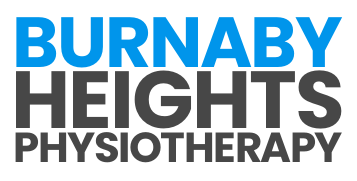Why You Should Try Dry Needling for Sports Injuries Today
October 27, 2025Transform Your Life with IMS Therapy for Joint Pain
October 27, 2025Recognize Fibromyalgia Symptoms
If you have been searching for an effective way to manage your chronic pain, you may have come across IMS therapy for fibromyalgia relief. Fibromyalgia often brings widespread aches, soreness, and fatigue that can disrupt your daily life. While every case is unique, common threads include:
- Frequent muscle pain or tenderness
- Persistent fatigue and difficulty sleeping
- Sensitivity to touch
- Trouble focusing and “fibro fog”
Because symptoms often overlap with other conditions, fibromyalgia is notoriously tricky to diagnose and treat. The key is to find an approach that addresses not just the surface discomfort but also the underlying triggers.
Understand IMS Therapy
Intramuscular Stimulation (IMS), sometimes referred to as dry needling, involves inserting fine needles into tight, shortened muscles. The goal is to release tension, improve muscle function, and retrain your system to reduce pain over time.
IMS vs. Traditional Dry Needling
Both IMS and traditional dry needling use needles to target muscle knots. However, IMS takes a more holistic view. Practitioners often consider factors like your nervous system, posture, and muscle imbalances, making IMS particularly helpful when you have chronic conditions like fibromyalgia or overlapping issues such as dry needling for chronic fatigue syndrome.
The Science Behind Needle Insertion
IMS needles create a mild therapeutic effect. When a needle hits an irritable muscle spot or trigger point, you might feel a slight twitch. This twitch interrupts the pain signals and helps restore healthier muscle activity. Over time, as these “stuck” muscles relax, you may notice better range of motion and less persistent discomfort.
Why IMS Helps Fibromyalgia
Your body’s pain pathways often become oversensitive with fibromyalgia. IMS therapy works to reset your muscles and nerves, calming the feedback loop that keeps you in pain.
Breaking the Pain Cycle
In fibromyalgia, even gentle movement can trigger significant discomfort. IMS targets specific muscles to reduce tension, allowing you to move more freely. By lowering pain at the muscular level, you may break the cycle of avoiding activity, which otherwise can worsen stiffness and fatigue.
Improving Mobility
When IMS loosens tight muscles, everyday tasks become less taxing. Many people with fibromyalgia experience overall stiffness in areas like the back, shoulders, and neck. If you also struggle with nerve-related pain, you might explore ims therapy for nerve pain to complement your fibromyalgia treatment.
Start Your IMS Journey
IMS therapy for fibromyalgia relief centers on a personalized approach. Your practitioner will assess your pain patterns, posture, and muscle tone, then create a plan that supports your lifestyle and goals. A few tips to keep in mind:
- Discuss your full medical history. This helps your therapist understand how fibromyalgia impacts you day to day.
- Plan for multiple sessions. Chronic pain often needs consistent care before you’ll see long-lasting results.
- Celebrate small changes. Notice when tasks become easier or pain flares happen less often. Incremental wins add up over time.
Look for a certified IMS professional who understands fibromyalgia’s unique challenges. If you deal with joint pain alongside fibromyalgia, you could also consider ims therapy for arthritis and joint pain. By taking steps toward a treatment plan tailored to you, you can gradually regain comfort and control.
IMS therapy may not be a magic fix, but it can be a powerful ally in your broader toolkit. With consistency, professional guidance, and a bit of patience, you can find meaningful relief from fibromyalgia symptoms and reclaim a more active, fulfilling life.


